Lessons From The Forest Part 4: Circles of Care
-By Rheanna Chen
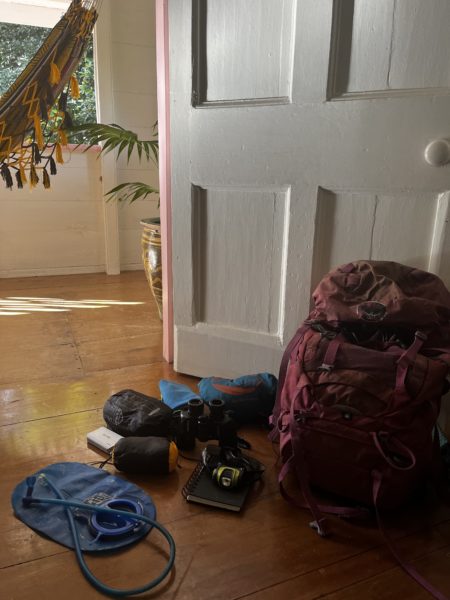
I used to pride myself in being “low maintenance”, but an important lesson I’ve learned this year is that maintenance is the bridge between care and repair. We can reflect on our own self care rituals and practices, then see how it ripples out into the rest of our lives. The more we have, the more maintenance that is required. However, the key is being aware of our closest circles- from relationships to the objects we use daily. I am definitely guilty of stretching myself thin- and in trying to balance many relationships, I see the correlation with all “the stuff”, some of it meaningless, which I own. During the pandemic, I’ve moved homes 6-8 times between Italy, France and Barbados- which has been a lesson in carefully choosing that which is most dear to me. It’s like having my life condensed into cardboard boxes and suitcases; it isn’t easy but it’s a necessary exercise in simplifying one’s life
How much do we actually need to live a fulfilling life? Our consumerist culture teaches us that the pathway to success and happiness is to accumulate things. However, this constant pursuit of more things can be exhausting. Where do we place value? How do we better care for things that we own? What am I exchanging in order to maintain and sustain such a lifestyle? If we want to live a more intentional life, what is our definition of success? How do we spend our time and money? In order to restructure our life, we start with our values and choose the path we wish to walk.
When we set off for our 6 day trip in the Northern Range, I was able to fit all my essentials into this backpack which has travelled the world with me. Sometimes, it’s a good reminder that we really don’t need as much as we think. Besides the essential water, food, clothes and bath/ body items- hiking is a lesson in minimalism. You carry your “home” on your back, where Hennessy hammocks become your lifeline for rest and learning how put on its tarp protects you from the rain and wind. When walking through the trails, you know at any point of rest, exactly what the contents are; each item was selected for a purpose. As we reached each camp for the night, Tracy would tend to setting up our beds along whichever trees were convenient. With a palm leaf in hand, she would sweep the debris across the sand, making us a “living room”. We hung our food rations from a tree and then built a bonfire to cook our food. There is something special about watching the sunset and first stars come out- unplugged from electronic devices and duty, just enjoying the raw beauty this island has to offer.
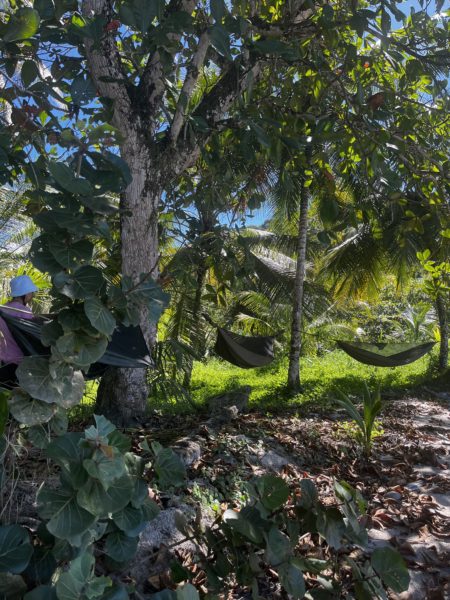
Trips like these are lessons in humility of how we can take this practice into our everyday, which is not easy for me. After my mum passed away from leukaemia, I lost this felt sense of “home”, suddenly. It is no-one’s fault, another form of loss and grief is the way we humans collect things- a lot of things. My house is full of cardboard boxes, strange appliances, old mattresses. electronic devices and miscellaneous items. You name it- we have it. Because of this, I’ve developed a strong aversion to clutter and crowded spaces. I am a firm believer that every item should have a place and meaning; but we have to learn to let go. In order to care for a home, we have to learn to maintain it, and that is a consistent practice. Where home is supposed to be a place of refuge, mine triggered anxiety and I often felt overwhelmed. Where the dining table once was, hidden among all the files and books. What was once a playroom, is a graveyard of unknown items. One can argue that your physical home is a reflection of your internal world.
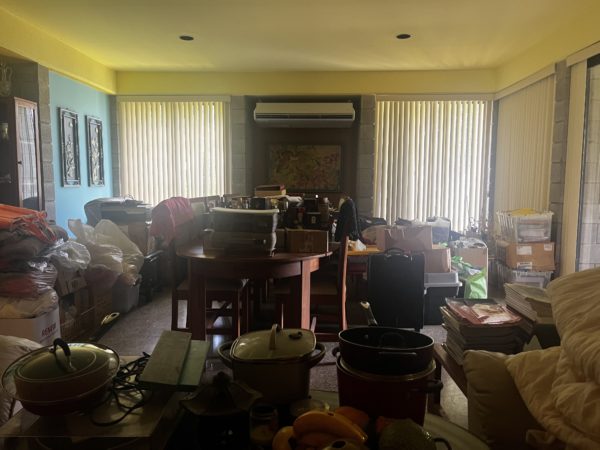
I would often empathise with the older generation who are survivors of war and the post traumatic stress that comes with that. I have memories of my grandmother who would have a pantry of the most useful items one can think of- from clothes hangers to luggage locks to small rice cookers. However, my home took it to another level; it lacked that methodical planning and was an explosion of 26 years of unprocessed grief. An individual, family and society’s collective ability to heal affects the inner and outer landscape. While capitalism and marketing have its impact on feeding that insatiable desire for more, it is human discipline that must challenge such impulses. Having a home requires so much work; having a comfortable home requires doing the work well.
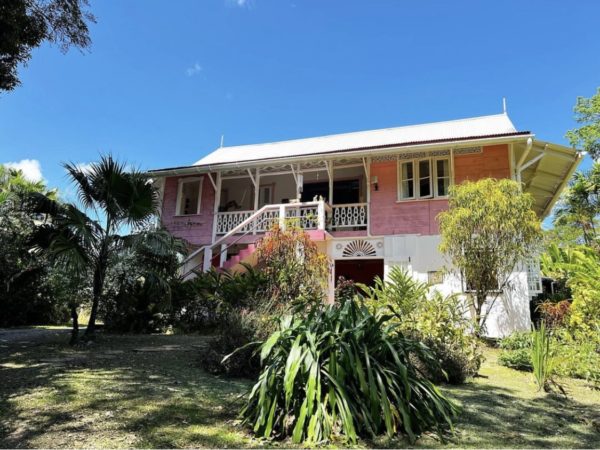
Almost a year ago, I returned home to Trinidad and was lucky to have the opportunity to live here- a 4.5 acre botanic garden with 200+ varieties of trees, flowers, birds and a 200 year old plantation house that has been preserved. In 1989, it was founded by Bunty & Rory O’Connor, as a ceramic factory that exported over half a million pieces across the Caribbean islands and beyond. The greatest lesson I’ve learned so far was reminded when I did yoga on the verandah one morning, and I observed a bird building its nest in the guttering of the roof. I observed carefully, the precision and care. In addition, I have observed this couple with 50 years of marriage work together to continuously look after the house- from rainy to dry season. This requires the different challenges of fighting forest fires to dealing with mildew and tropical storms. Bunty often says, “us old people want things to last for a lifetime”, as she shows me her wedding table and antique shelf which they still have today, in top condition. Even the garden, which was once laden with synthetic chemicals and not a single earthworm in sight, has been regenerated over the years with principles of permaculture.
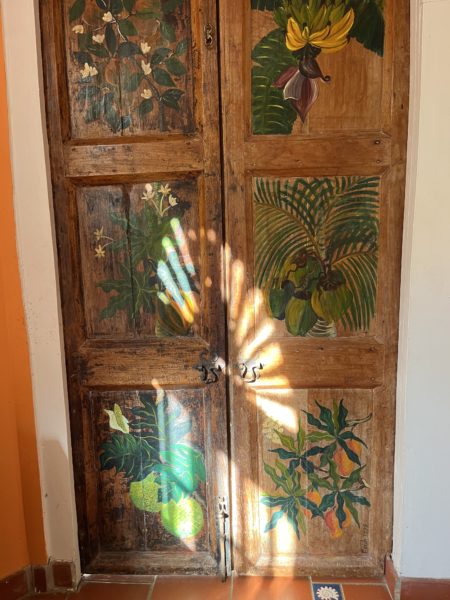
Both in their seventies, I’ve watched the rhythm the couple has in tending to their garden whether pruning, propagating to saving seeds. With their home, it is the most magical combination of ecology and art in one place. Houses in the countryside are not easy to maintain but they have somehow found that harmony, to keep up with the everyday wear and tear, and then the larger projects of fallen trees and replacing old electricity lines. They work as a team, agreeing to their list and committing to the task at hand. They have that delicate balance of knowing when to work hard, but also knowing when to rest. Rory often says “you reap what you sow, and I sowed plenty, I’m reaping plenty now”. As mentioned, homes are a physical manifestation of the care that we give to ourselves, to our partners and other relationships. It is common to see when one is having a hard day, their room tends to reflect that. Now imagine a whole house.
The concept of care will be a lifelong quest for me. The truth is, by nature – I’m not a caring person. As the daughter of workaholic families, it is often difficult for me to prioritise and nurture the various parts of my life that need the attention. However, I am learning to get better. For those guilty of neglect- even watering their home plants- we have the opportunity to make a U-turn. What we practice grows stronger. The challenge is re-wiring our mind, and committing to that which we desire most. Currently, I am about to build a small home of my own. Luckily, I have contrasting examples of what I want and don’t want. Also, the hike from earlier this year reminds me that I can enjoy more with less- which is a reminder for all of life.
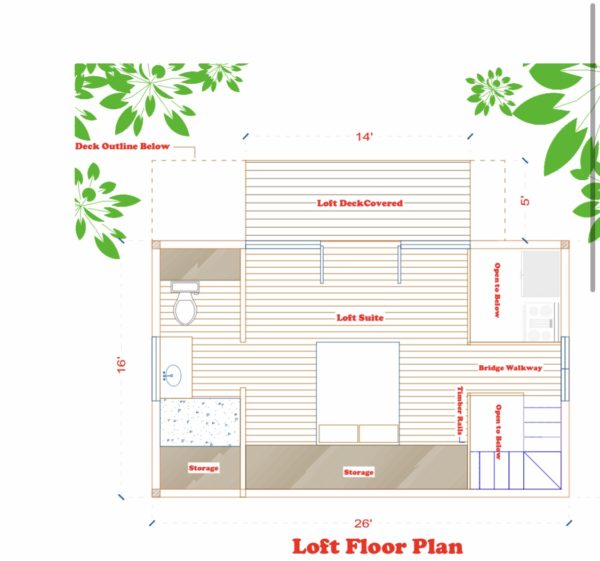
NOTE: All images that are not explicitly cited from an external source were created by the author.